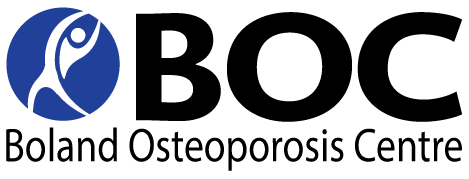
DEXA BONE DENSITY SCAN
The DEXA bone desity scan is considered the most accurate bone density test. It estimates the amount of bone in your hip, spine and sometimes other bones. Your test result will help your healthcare provider make recommendations to help you protect your bones.
Give us a call
021 872 0705
Send us a Message
admin@bolandosteo.co.za
Visit us
16 Paarl Medical Centre, Berlyn street, Paarl
What is a DEXA scan?
A DEXA Scan is an imaging test that measures bone density (the amount of bone mineral contained in a certain volume of bone) by passing x-rays with two different energy levels through the bone. It is used to diagnose osteoporosis (decrease in bone mass and density). Also called BMD scan, bone mineral density scan, DEXA, dual energy x-ray absorptiometric scan, dual x-ray absorptiometry, and DXA.
How to prepare for a DEXA scan
No special preparations are needed. You may be able to remain fully clothed, depending on the area of your body being scanned, but you’ll need to remove any clothes that have metal fasteners, such as zips, hooks or buckles. In some cases, you may need to wear a gown.
The purpose of a DEXA scan is to:
- Identify decreases in bone density before you break a bone
- Determine your future risk of broken bones
- Confirm a diagnosis of osteoporosis
- Let us know if you’re osteoporosis treatment is working
How Often to Repeat a Bone Density Test
People taking an osteoporosis medicine should repeat their bone density test by method of DEXA every 1-2 years. After starting a new osteoporosis medicine, many healthcare providers will repeat a bone density test after one year. In other cases clinical information will be used to recommend a follow up scan in 2-5 years.
How safe are DEXA bone density scans?
Bone density scans are very safe. The amount of radiation used during a bone density scan is very low and less than 2 days’ exposure to natural background radiation (NBR). By comparison, a chest X-ray us es the equivalent of about 3 days’ exposure to NBR, and a flight to North America is equivalent to approximately a week’s exposure to NBR.
How a DEXA bone density scan is performed

How a DEXA bone density scan is performed
A DEXA bone density scan is a quick and painless procedure that involves lying on your back on an X-ray table so an area of your body can be scanned by a radiographer, a specialist in taking X-ray images.
During the scan, a large scanning arm will be passed over your body to measure bone density in the center of the skeleton. As the scanning arm is moved slowly over your body, a narrow beam of low-dose X-rays will be passed through the part of your body being examined. This will usually be your hip and lower spine to check for weak bones (osteoporosis), but as bone density varies in different parts of the skeleton, more than one part of your body may be scanned. The forearm may be scanned for certain health problems, such as hyperparathyroidism, or if scans are not possible in the hip or spine.
The scan usually takes 20 to 30 minutes.
Understanding Your Bone Density Test Results
Your bone density test results are reported using T-scores. A T-score shows how much your bone density is higher or lower than the bone density of a healthy 30-year old adult. The lower a person’s T-score, the lower the bone density. We look at the lowest T-score to diagnose osteoporosis.
What Your T-score Means according to the World Health Organization (WHO):
- A T-score of -1.0 or above is normal bone density.
Examples are 0.9, 0 and -0.9. - A T-score between -1.0 and -2.5 means you have low bone density or osteopenia.
Examples are T-scores of -1.1, -1.6 and -2.4. - A T-score of -2.5 or below is a diagnosis of osteoporosis.
Examples are T-scores of -2.6, -3.3 and -3.9.
Understanding Your Bone Density Test Results



